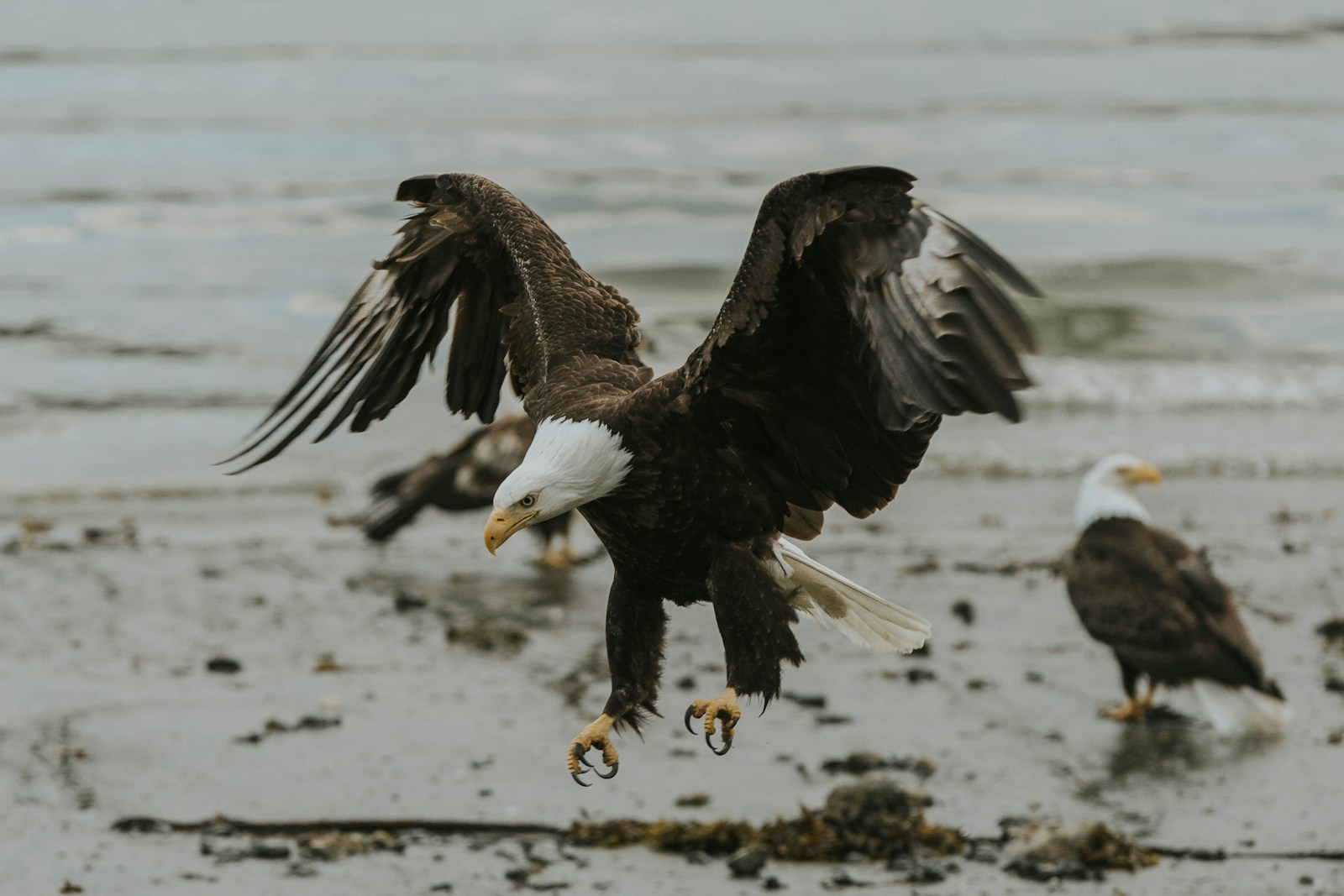The majestic bald eagle, America’s national bird and an icon of strength and freedom, makes deliberate choices about where to build its home. Across North America, a distinct pattern emerges in their nesting habits: bald eagles frequently choose to establish their massive nests near high cliffs and alongside rivers. This preference isn’t random but represents thousands of years of evolutionary adaptation and survival strategy. Their nesting locations reflect a sophisticated understanding of security, food accessibility, and environmental advantages. By examining why these magnificent birds select such specific habitats, we gain insight not only into eagle behavior but also into the delicate balance of ecosystems that support wildlife across the continent.
The Protective Advantage of High Cliffs
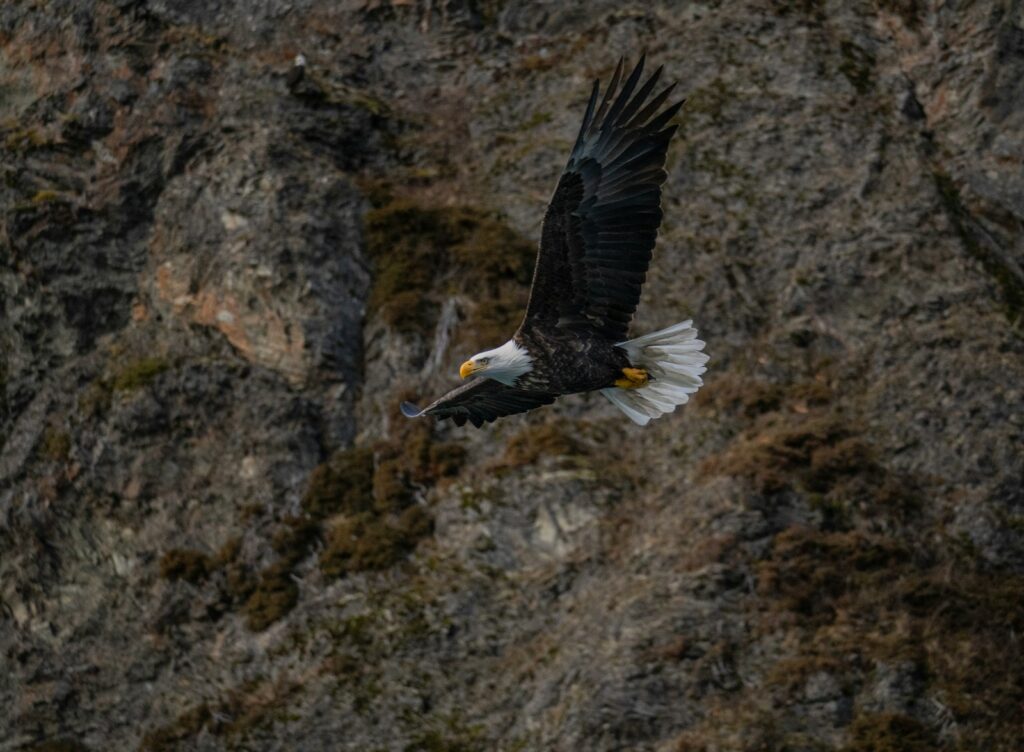
Bald eagles prioritize safety when selecting nesting sites, and high cliffs offer unparalleled protection from ground predators. These natural fortresses create physical barriers that prevent mammals like raccoons, foxes, and bears from accessing eagle nests and threatening their eggs or eaglets. The sheer vertical face of a cliff is virtually impossible for most predators to scale, creating a natural security system. Additionally, the elevated position gives adult eagles a tactical advantage, allowing them to spot approaching threats from considerable distances and prepare defensive measures. This strategic height barrier has proven so effective that eagles will return to the same cliff nesting sites for decades if left undisturbed, with some nest locations being used by successive generations of eagles.
The Panoramic Visibility Factor
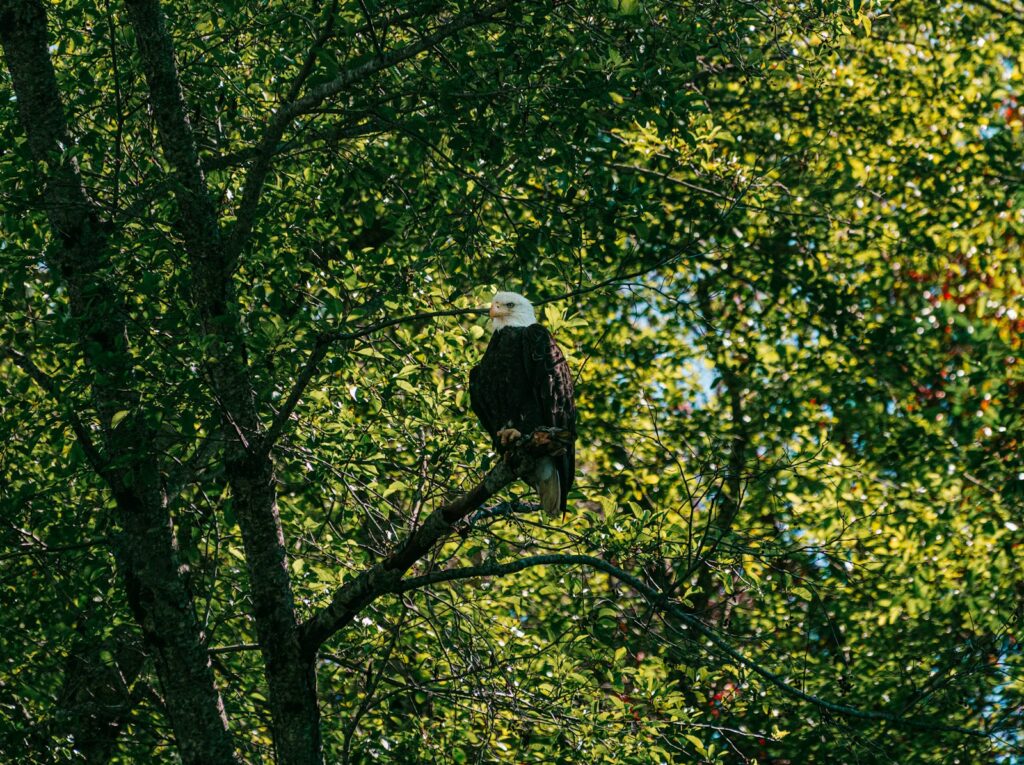
Elevated nesting sites provide bald eagles with exceptional visibility across their territory, a crucial advantage for these keen-eyed hunters. From high cliff perches, eagles can survey vast stretches of landscape and water, allowing them to monitor both potential threats and hunting opportunities simultaneously. This panoramic viewpoint helps them detect the silver flash of fish swimming near water surfaces from remarkable distances, sometimes exceeding a mile away. The height advantage also allows eagles to observe territorial boundaries and quickly spot intruding eagles or other competitors that might challenge their domain. Researchers have documented that nests with superior visibility typically show better hunting success rates and consequently higher chick survival rates, demonstrating the evolutionary value of this preference.
Proximity to Abundant Food Sources

Rivers represent consistent and rich food sources for bald eagles, explaining their strong preference for nesting nearby these flowing waterways. Fish comprise approximately 60-90% of the typical bald eagle’s diet, making water access non-negotiable for successful reproduction. Rivers provide year-round fishing opportunities, particularly in areas where portions remain unfrozen during winter months. The moving water of rivers also creates conditions where fish are more easily spotted from above, especially in shallow rapids or where currents push fish near the surface. Eagles that nest near convergence points where smaller streams join larger rivers often experience even greater hunting success, as these junctions frequently serve as natural fish congregation areas.
Wind Currents and Energy Conservation

Cliffs and river valleys generate predictable updrafts and thermal air currents that bald eagles expertly utilize for energy-efficient flight. These powerful birds have wingspans reaching up to eight feet, and soaring on natural air currents allows them to cover vast territories while expending minimal energy. The topography around cliffs creates reliable updrafts as wind hits the vertical faces and is forced upward, providing eagles with natural “elevators” to gain altitude without strenuous flapping. This energy conservation is particularly crucial during nesting season when adults must make countless hunting trips to feed their growing young. Some studies suggest eagles may save up to 30% of their energy budget by nesting in locations with favorable air currents—an adaptation that directly contributes to reproductive success.
Natural Protection from Extreme Weather

Cliff faces often provide strategic protection from harsh weather conditions, another factor in bald eagles’ nesting preferences. Many cliff nests are positioned with southeastern exposures that capture morning sunlight while being sheltered from prevailing storm directions. This orientation helps regulate nest temperature and keeps eggs and young eaglets dry during periods of inclement weather. The rock formations themselves can serve as windbreaks, reducing the impact of powerful gusts that might otherwise damage nests or threaten nestlings. Eagles often select cliff indentations or areas beneath slight overhangs that offer additional protection from driving rain or snow while still allowing the adults easy access for coming and going.
Isolation from Human Disturbance
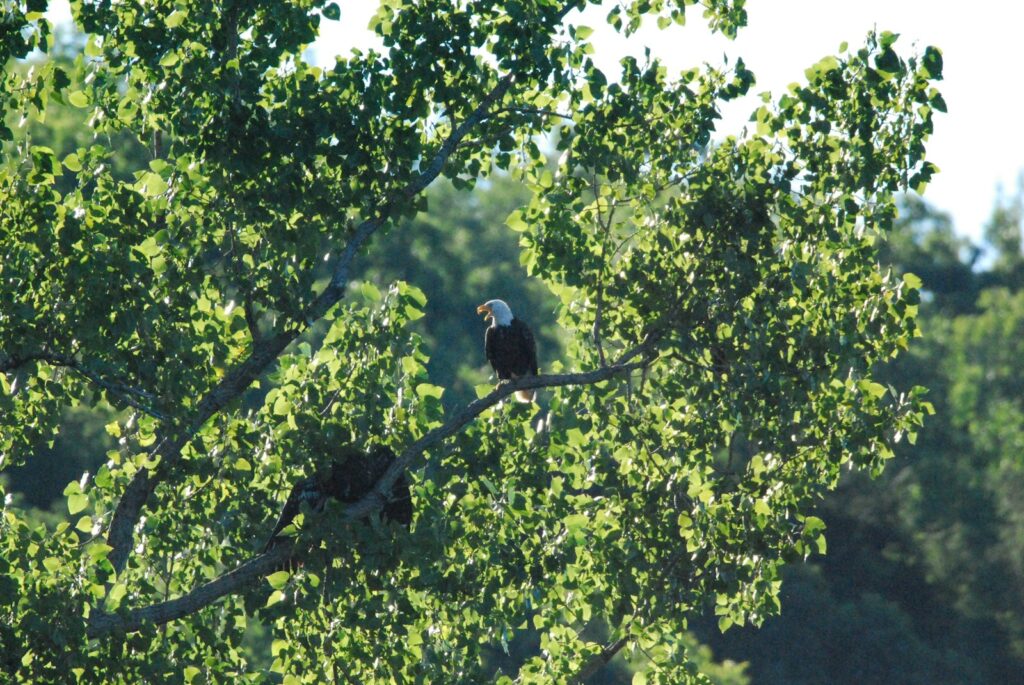
Inaccessible cliff locations provide crucial separation from human activities that could otherwise disrupt the sensitive nesting process. Bald eagles are particularly vulnerable to disturbance during the early phases of nesting, and human presence can cause adults to abandon nests or eggs. Cliffs near rivers often represent some of the most remote landscapes, especially in areas where steep terrain has prevented development or regular human visitation. This natural isolation serves as a buffer against the expanding human footprint across North America. Conservation studies have shown that nesting success rates decrease significantly when nests are located within certain distances of human activity centers, highlighting the importance of these secluded habitats for eagle reproduction.
The Advantage of Clean, Moving Water

Rivers provide eagles with access to clean, oxygenated water that supports healthy fish populations—the primary food source for these birds. Unlike stagnant water bodies that may experience more significant pollution concentration or oxygen depletion, flowing rivers generally maintain better water quality and more robust aquatic ecosystems. This water quality directly influences the health and abundance of fish species that eagles depend upon. Rivers with natural riparian zones and minimal pollution typically support larger fish populations and greater biodiversity, creating superior hunting grounds. Eagles demonstrate remarkable ability to assess water quality, often abandoning territories where pollution has degraded fish populations below sustainable thresholds.
Architectural Support for Massive Nests
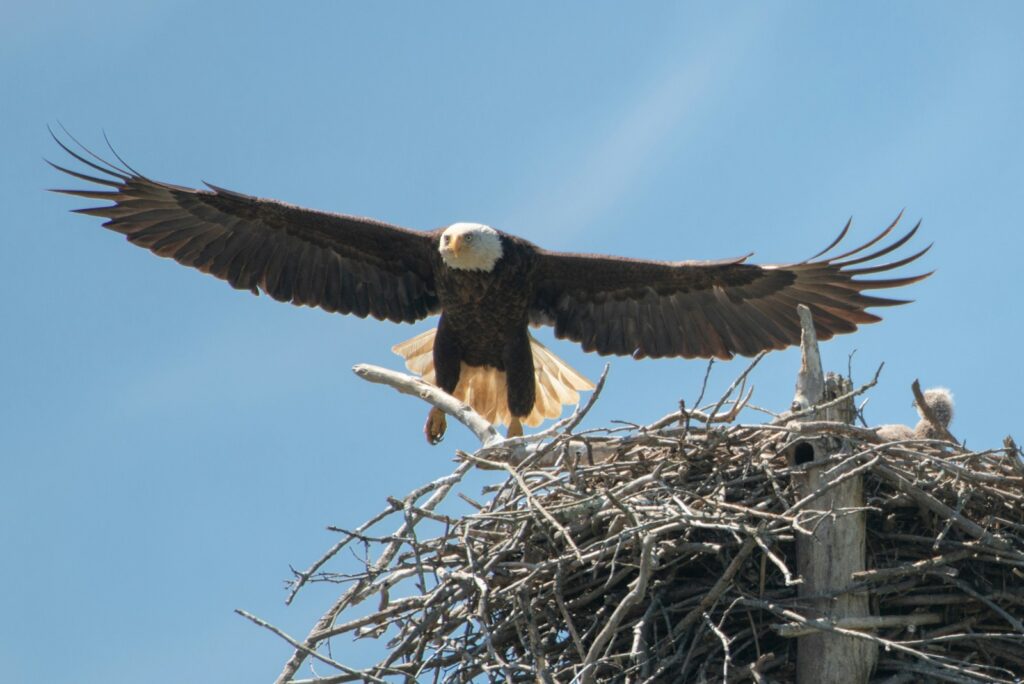
Bald eagle nests rank among the largest structures built by any North American bird, requiring substantial support that cliff ledges and large riverside trees can provide. These impressive structures, called eyries, typically measure 5-6 feet in diameter and 2-4 feet deep when first built, but can grow to extraordinary dimensions over time. Some documented nests have reached over 9 feet in diameter and weighed more than 2 tons after years of additions and maintenance. Cliff ledges offer the structural stability necessary to support these enormous constructions that might collapse platforms with less robust foundations. The natural crevices and indentations in cliff faces also provide anchoring points that help secure nests against strong winds and storms, preventing catastrophic nest failures during breeding season.
River Systems as Navigation Highways

Rivers serve as natural navigation corridors that help eagles orient themselves across vast territories and during seasonal movements. These waterways create distinct visual landmarks that eagles can follow during hunting expeditions or when traveling between different parts of their territory. For younger eagles or those exploring new territories, rivers provide unmistakable reference points in the landscape, reducing the chances of becoming disoriented. This navigation advantage becomes particularly important during winter months when eagles may need to relocate temporarily to find open water for fishing. Researchers tracking eagle movements have observed that many populations follow river corridors during seasonal migrations, further demonstrating the importance of these natural highways.
Water Access for Bathing and Maintenance
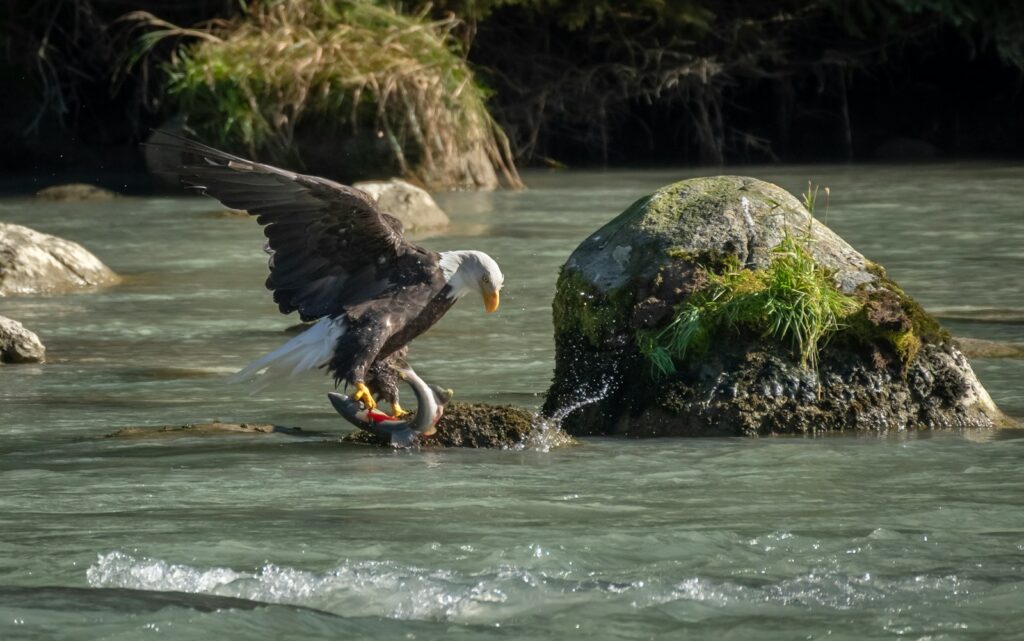
Proximity to rivers provides eagles with essential water access for regular bathing and feather maintenance, critical aspects of their health and hunting ability. Eagles are meticulous about feather care, as their flight and insulation capabilities depend on well-maintained plumage. Regular bathing helps remove fish oils, dirt, and parasites that could otherwise compromise feather integrity or flight performance. After bathing, eagles often perch on riverside snags or cliff edges to preen and dry their feathers in the sun, a process that helps maintain proper feather alignment and waterproofing. This water access for bathing becomes especially important during nesting season when adults cannot travel far from their young but still need to maintain peak physical condition for successful hunting.
The Ecological Web Around Rivers
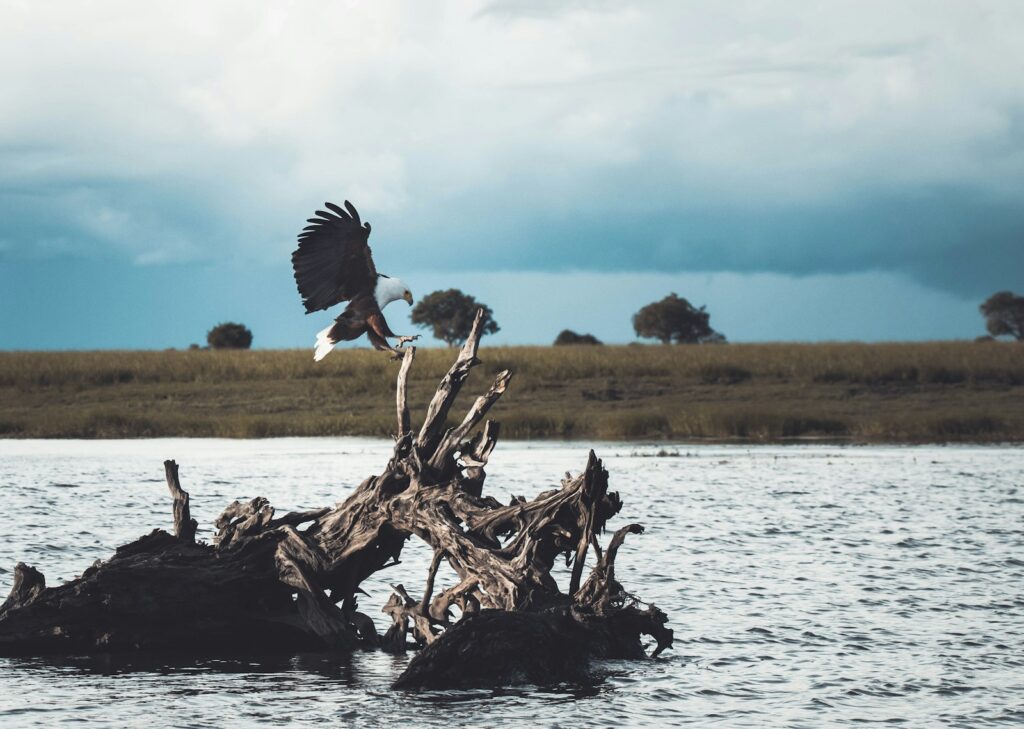
River ecosystems support complex food webs that provide eagles with dietary diversity beyond just fish, enhancing their survival resilience. While fish form the cornerstone of bald eagle diets, these opportunistic predators also consume waterfowl, small mammals, and carrion—all found in abundance along healthy river corridors. The riparian zones flanking rivers support dense populations of small mammals that eagles may hunt during fish scarcity or winter freezes. Waterways also attract diverse bird species, providing additional hunting opportunities when conditions for fishing are suboptimal. This dietary flexibility supported by diverse river ecosystems helps eagles weather seasonal changes and temporary food shortages, a particularly crucial advantage during the demanding nesting season when adults must provide consistent nutrition for growing eaglets.
Conservation Implications of Nesting Preferences
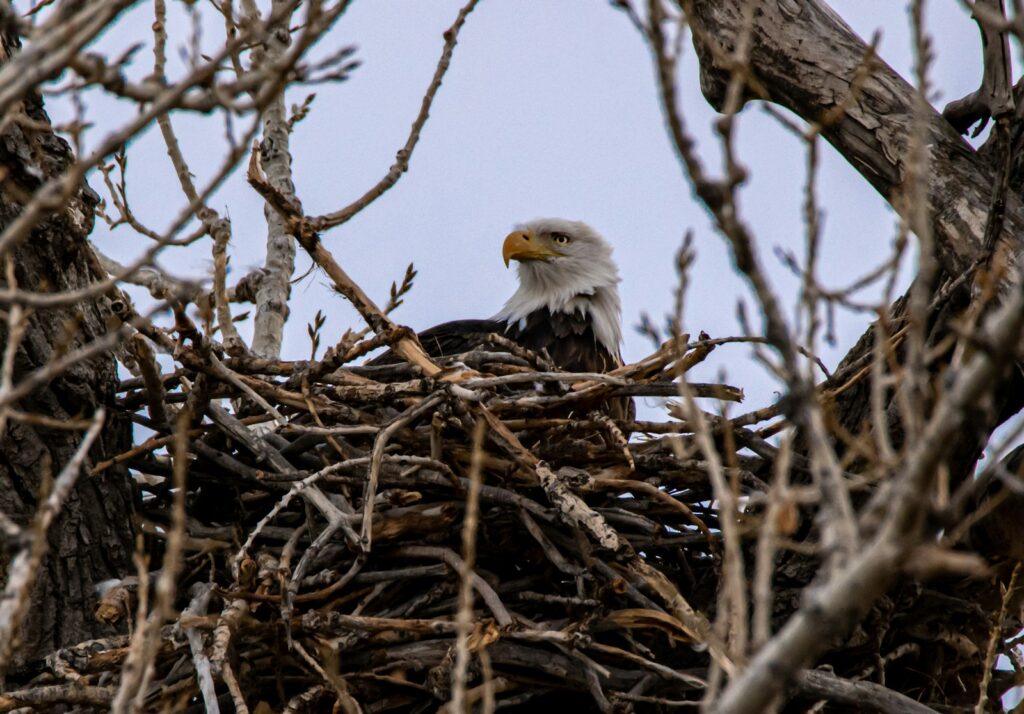
Understanding bald eagles’ preference for cliff and riverside nesting sites has profound implications for effective conservation strategies and habitat protection efforts. Conservation organizations now prioritize protecting these specific landscape features within eagle territories, recognizing they cannot be easily substituted or artificially created. Buffer zones around active nests on cliffs and along rivers have become standard practice in management plans, with some jurisdictions mandating protection zones extending up to half a mile from active nests. The interconnection between water quality, fish population health, and eagle reproduction success has also reinforced the importance of watershed protection as an integral component of raptor conservation. By aligning protection efforts with the natural preferences of these birds, conservation programs have contributed significantly to the bald eagle’s remarkable recovery from endangered status.
Adaptation to Modern Landscapes
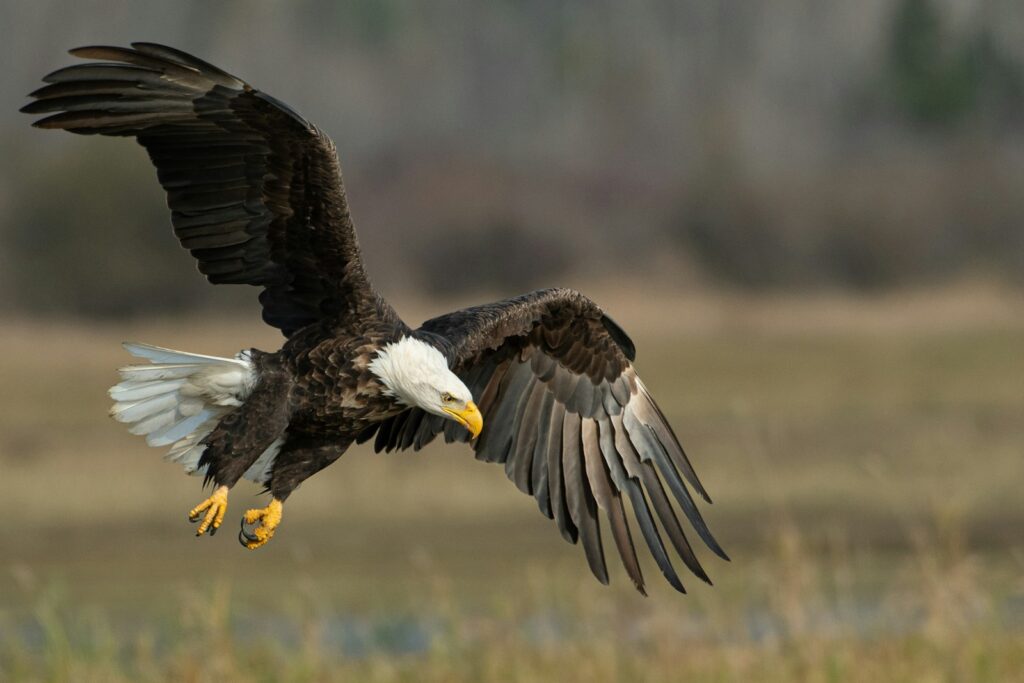
While natural cliffs and pristine rivers represent ideal nesting environments, bald eagles have demonstrated remarkable adaptability to modified landscapes when necessary. In areas where natural cliffs are unavailable, eagles may select the tallest available trees near water bodies, particularly those with open crown structures that can support their massive nests. Some populations have adapted to using artificial structures like transmission towers or abandoned mining quarries that mimic the height and security advantages of natural cliffs. This adaptability, while impressive, doesn’t diminish the importance of natural habitat preservation, as studies consistently show higher reproductive success in traditional cliff and riverside territories. The eagle’s capacity to adapt while still showing strong preference for historical nesting habitats illustrates both their resilience and the irreplaceable value of protecting natural landscape features in conservation efforts.
The bald eagle’s preference for nesting near high cliffs and rivers represents a masterpiece of evolutionary adaptation, where location choice directly enhances survival probability and reproductive success. These nesting preferences aren’t merely matters of convenience but reflect sophisticated survival strategies refined over millennia. By selecting these specific habitats, eagles gain advantages in predator avoidance, hunting efficiency, and nestling protection that directly translate to higher reproductive rates. As we continue to protect these critical habitats, we not only secure the future of America’s national bird but also preserve the complex ecological relationships that sustain diverse wildlife communities along our waterways and dramatic landscapes. The eagle’s nesting preferences serve as a powerful reminder that in nature, location is never random—it’s a matter of survival.

